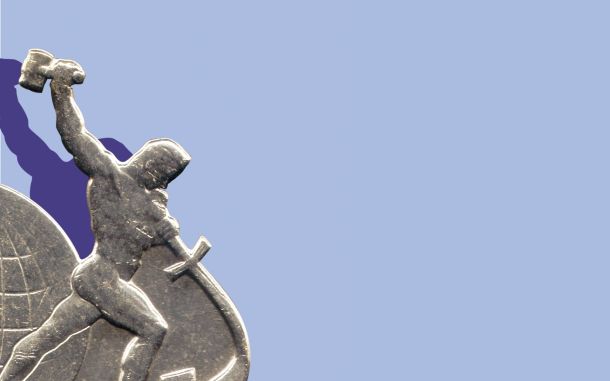Trust

In This Article
-
What is the difference between trusting a “person” and trusting “abilities”? Why do you trust certain people and not others? How do you know them as trustworthy or untrustworthy?
-
Interpersonal trust has been studied extensively in the literature. One of the well-known definitions of trust is the “willingness of a party to be vulnerable to the action of another party based on the expectation that the other will perform a particular action important to the trustor, irrespective of the ability to monitor or control that other party.”
-
Who are the top scorers in trustworthiness? Historically, the “Messengers of God” are among the most important figures for humanity. They had the most significant mission to guide and show the truth to the people of their time.
Trust is a concept that is the foundation for everything we do in our lives. We utilize trust to establish and maintain our interactions with our family members, friends, business associates, other members of society, and any information technology we use. In our daily lives, we use statements like, “I trust my doctor,” “I trust my husband,” “I trust Google maps better,” or “I know my son is competent and honest, but I would not trust him to post a letter, because he is forgetful.” Then, what is trust? How can we build or rebuild it? What is the difference between trusting a “person” and trusting “abilities”? Why do you trust certain people and not others? How do you know them as trustworthy or untrustworthy? This article will explore these concepts in various contexts by showing an example from well-established studies.
Interpersonal trust has been studied extensively in the literature. One of the well-known definitions of trust is the “willingness of a party to be vulnerable to the action of another party based on the expectation that the other will perform a particular action important to the trustor, irrespective of the ability to monitor or control that other party” [1]. Willingness to be vulnerable is a key phrase and means opening oneself up to someone else. Mayer proposed three elements as the pillars of trust: ability, integrity, and benevolence. Together, the perception of these factors indicates the trustworthiness of a person in the eyes of others. Let's explore these concepts one by one.
“Ability” is a group of skills, competencies, knowledge, and characteristics that allow an individual to have a certain influence in a specific domain [2]. It means that an individual must be knowledgeable or skillful in the area that is important to another individual who is the trustor (the person who gives trust). For instance, when I seek counsel for health issues as a patient, it is reasonable that I go to an individual with specific training in the medical area, such as a doctor. I would not go to someone who does not have knowledge or skills in medicine, such as a history teacher. That teacher may be trusted in education, but this does not mean he or she can be trusted to give advice in the medical field.
“Integrity” is the second pillar of trust, defined as “the trustor's perception that the trustee adheres to a set of principles that the trustor finds acceptable” (Mayer et al., 1995, p. 719). In other words, each individual in the relationship must be on the same page regarding these principles. It is also critical to establish these principles for acceptability and adherence. They may be explicitly discussed but, more likely, implicitly assumed to exist and agreed upon. For instance, I am an academic, so I can give an example on sharing intellectual property. I would expect that anyone in my circle of colleagues who wanted to use or share with others something I had invented, written, or introduced to the field would ask me before doing so, because I have the same expectations of myself. In addition, following some sets of principles defines personal integrity [3]. However, if that set of principles is not deemed acceptable by the trustor, the trustee would not be considered to have integrity (also called “moral integrity”).
The last pillar of trust is called “benevolence.” Benevolence is “the extent to which a trustee is believed to want to do good to the trustor, aside from an egocentric profit motive” (Mayer et al., 1995, p. 718). Benevolence involves caring about the other person, not having a vested interest, and not benefiting from the relationship. For instance, you can offer advice and guidance to others, not expecting anything in return. Another example might be the relationship between the mentor (trustee) and the mentee (trustor). The mentor wants to help the mentee, even though the mentor is not required to be helpful and there is no extrinsic reward for the mentor. Benevolence is the perception of a positive orientation of the trustee toward the trustor.
Trust happens at the convergence of these three dimensions. Before we discuss how we can use these three individual dimensions to establish and maintain trust, I would also like to introduce the concept of “trust” versus “trustworthiness.” Should we aim to build trust or to be trustworthy? As individuals, it is much better to increase “trustworthiness” rather than trying to increase “trust.” In other words, first, we must establish qualities to be a trustworthy person, so people can trust us. Second, we should have more trust in the trustworthy but not in the untrustworthy. We are looking for trustworthiness before trust, because trust is the response, and trustworthiness is what we have to judge.
Rebuilding trust
Another common goal or task is “rebuilding trust.” How can we rebuild trust as an individual, group, or society? The response also lies in the concept of “trustworthiness.” First, we must understand that trust is distinctive since others give it. The best thing you can do is provide them with the basis and evidence for giving you their trust, so you have to be judged as trustworthy. This judgment requires us to look at three things: Are we competent? Are we honest? Are we reliable? And if we find that a person is competent in the relevant matters and reliable and honest, we will have a strong reason to trust them because they will be trustworthy. On the other hand, you may have a friend who is honest and competent but unreliable for certain tasks, and you may not trust them, especially for those tasks. Therefore, rebuilding trust also goes back to reestablishing qualities and pillars which will make you “trustworthy” again.
Let’s go back to the original “trust model” by Mayer: ability, integrity, and benevolence. We already defined what they mean; our last question now is, how can we use them to come up with a mathematical formula for “trustworthiness”? One formula could be as follows:
Trustworthiness = ability × integrity × benevolence [4]
In multiplication, if there is a zero among the factors, the product will be zero. If you get a zero in any of the pillars above (ability, integrity, or benevolence), your trustworthiness score will be, unfortunately, zero. On the other hand, if you score high in each pillar, your trustworthiness score will increase exponentially. This formula is especially essential for the critical roles such as “leaders” in the society.
Who are the top scorers in trustworthiness? Historically, the “Messengers of God” are among the most important figures for humanity. They had the most significant mission to guide and show the truth to the people of their time. Often, it was very dangerous for their followers to follow them and their teachings. Many of them were oppressed and even tortured. How could those people follow the messengers despite risking their own lives? Yes, the answer is trustworthiness. Those messengers were trustworthy to their followers and showed all the pillars and evidence of being trustworthy; thus, people trusted them and their teachings, and their legacy is still recognized after many centuries.
From another perspective, a great mission such as God’s messengership requires excellent qualifications. Being “trustworthy” is one of them. Chapter 26 (ash-Shu'ara) in the Holy Qur’an tells us about stories of various messengers and depicts their conversations with people. The messengers in the chapter were Noah, Hud, Salih, Lot, and Shu'ayb (peace be upon them). They all used precisely the same statement to prove that they were the Messenger, so they should be followed: “Surely, I am a Messenger to you, trustworthy” (107, 125,143, 162, 178). They all also emphasized “benevolence” by saying, “I ask of you no wage for that (for conveying God’s Message), my wage is due only from the Lord of the Worlds” (109). In other words, they expected no rewards from human beings for performing their missions.
Ali Ünal, an Islamic scholar, further explains these verses with a footnote in his translation of the Qur’an:
Trustworthiness and communication of God's Message are two of the essentials of Messengership, the others being truthfulness, intelligence, sinlessness, and freedom from all bodily and mental defects. These are present in every Messenger. Truthfulness is the cornerstone of Messengership. No lies or deceit, whether explicit or implicit, were ever uttered by them. The second attribute of Messengership is amanah, an Arabic word meaning trustworthiness and which is derived from the same root as mu'min (believer). Being a believer implies being a trustworthy person. All Prophets were the best believers and, therefore, perfect exemplars of trustworthiness. To stress this principle, God summarizes the stories of five Prophets in this surah using the same statements: “Surely I am a Messenger to you, trustworthy” (107, 125, 143, 162, 178). Mu'min is also a Divine Name, for God is the ultimate Mu'min, the source of security and reliability. We put our trust in, confide in, and rely upon Him. He distinguished the Prophets by their trustworthiness, and our connection to Him through the Prophets is based entirely on their trustworthiness and reliability. [5]
We are all a part of our society as individuals, family members, and leaders. However, regardless of one’s role in society, the individuals who focus on building ability, integrity, and benevolence altogether are the ones considered trustworthy. Focusing on the three pillars, all of us need to work equally hard to develop our ability to deliver results; our integrity to “walk the walk”; and our benevolence to do well to others.
References
1) Mayer, R. C., Davis, J. H., & Schoorman, F. D. (1995). An integrative model of organizational trust. Academy of management review, 20(3), 709-734.
2) Gubbins, C., & MacCurtain, S. (2008). Understanding the dynamics of collective learning: The role of trust and social capital. Advances in Developing Human Resources, 10(4), 578-599.
3) McFall, L. (1987). Integrity. Ethics, 98(1), 5-20.
4) Obtained from https://www.koganpage.com/article/the-3-pillars-of-trust
5) Ünal, Ali. 2006. The Qur’an With Annotated Interpretation in Modern English.









